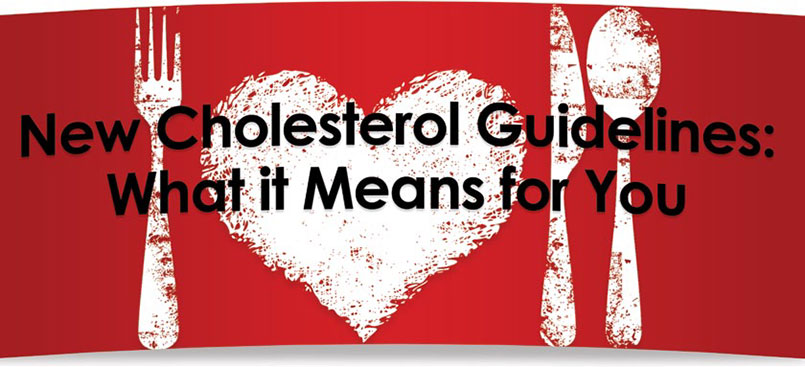The report reemphasizes the importance of a healthy lifestyle that incorporates exercise and dietary modifications.
Last fall the American College of Cardiology and the American Heart Association jointly issued the long awaited new guidelines for cholesterol management. These guidelines represent a significant departure from our traditional approach. Rather than targeting to a specific LDL (bad cholesterol) or HDL (good cholesterol) number, the new guidelines emphasize the use of proven therapies (essentially statins) at proven doses (high or moderate intensity statin regimens) in specific populations.
The first group are individuals with established atherosclerotic cardiovascular disease (a prior heart attack, stroke, stent, coronary bypass or vascular surgery). They should in general, be on a high intensity statin regimen which aims to drop LDL by > 50% from baseline.
This usually means atorvastatin 40-80 mg or rosuvastatiin 20-40 mg daily. In patients over the age of 75, a moderate intensity regimen which aims to drop LDL by 30 to 50% should be used. Many of the older statins fall into this category.The next group of individuals are diabetics. If you are over the age of 40 then at least one of the two statin regimens should be used.
The next group are individuals who have a baseline LDL of > 190. Generally such individuals have a genetic cause for the high LDL and should be on a high intensity statin regimen.
The 4th and largest group is also the most controversial recommendation. Using a specific risk calculator which can be downloaded (my.americanheart.org/professional/StatementsGuidelines/PreventionGuidelines/Prevention-Guidelines_UCM_457698_SubHomePage.jsp) individuals can determine their 10 year and lifetime risk for atherosclerotic cardiovascular disease. T
he risk calculator looks at age, sex, race, blood pressure, and baseline cholesterol level. If your 10 year risk is greater than 7.5% then statin therapy is recommended. For individuals having a lower risk, 4 additional factors are asked to be considered before determining the need for treatment.
They include family history, a marker of inflammation hs-CRP > 2, a calcium score > 300 or a blood pressure measurement ankle-brachial index < 0.9.The use of other cholesterol lowering agents such as bile acid sequestrants, fibrates, niacin, ezetimibe and fish oils is now discouraged except in limited specific situations.
The report reemphasizes the importance of a healthy lifestyle that incorporates exercise and dietary modifications. In addition, prior to the initiation of statin therapy a discussion on side effects, drug interactions, and medication adherence needs to occur with the treating physician. I encourage you to use this opportunity to reassess your cholesterol and reduce your risk!


